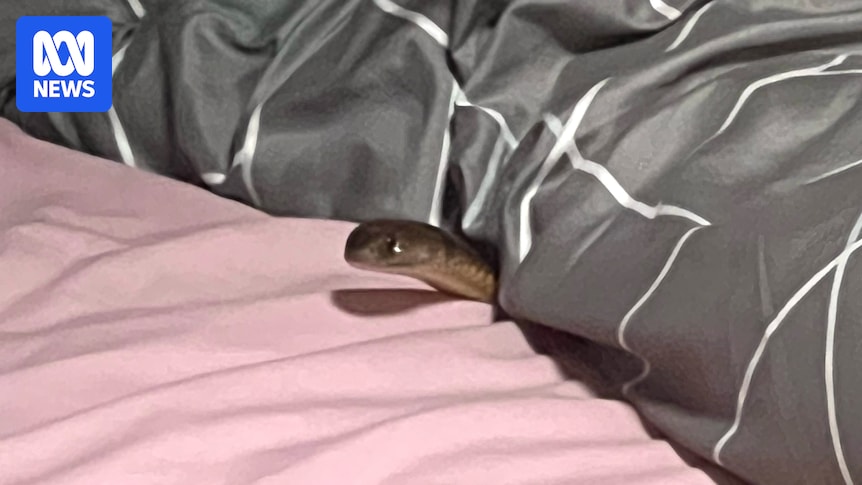
A near-fatal encounter with an eastern brown snake did not deter Kasey Leadbetter’s affection for these reptiles. However, more than a year after her life-threatening experience, she advocates for improvements in snakebite treatment protocols. The 22-year-old was working as a nanny on a rural property in Glenmorgan, approximately 250 kilometers west of Toowoomba, when she was bitten on the hand during her sleep.
The LifeFlight crew captured a striking image of the snake nestled under Ms. Leadbetter’s bedding as they rushed to provide emergency care. “The [man] who did my first aid was over within a minute — I was already laying on the floor,” she recounted. Despite having a polyvalent antivenom available, it was deemed too risky to administer it immediately due to potential side effects.
Dr. Richard Pallett, who attended to Ms. Leadbetter during the LifeFlight transfer, explained, “When we saw her, she was what we’ve described as sort of clinically stable, with normal vital signs. She was quite pale and nauseated, but she didn’t look too envenomated, so we elected to transfer her without giving antivenom, because giving the antivenom itself does have some side-effects.”
Rising Incidents of Snake Bites
According to Queensland Health data, there has been a 15% increase in emergency department presentations for snake bites, with 1,257 cases recorded in 2024 compared to 1,094 in 2023. December 2024 alone saw 160 snake bite presentations, marking it as the month with the highest number of cases that year. LifeFlight Toowoomba responded to over 60 incidents in 2024 and has already attended about 40 cases in 2025.
Dr. Ben Aston from LifeFlight emphasized the need for further research to improve outcomes for snakebite victims. “There’s certainly space for more research in this field as it’s an important concern not just for Queensland, but for all of Australia, affecting our retrieval operations,” he stated.
Geographic Variations in Venom
A recent study by the University of Queensland has uncovered significant differences in the venom of eastern brown snakes based on their geographic location. The study revealed that toxins in the venom of northern and southern populations produce blood clots in distinctly different ways.
Research co-author Bryan Fry noted that the southern population, found in Adelaide, Melbourne, the ACT, and parts of New South Wales, possesses venom that behaves more like that of a taipan, forming strong, stable blood clots. In contrast, venom from northern populations in Queensland and parts of the Northern Territory, as well as other brown snake species, forms fragile clots rapidly.
“Its venom behaves more like a taipan, forming strong, stable, robust blood clots but all the other brown snakes are forming these wispy, paper-thin clots that break down almost instantly,” Fry explained.
Dr. Fry highlighted the need for more data to determine if these variations result in different clinical effects when bitten by snakes from different populations.
The Call for Comprehensive Research
Timothy Jackson, head of the University of Melbourne’s Australian Venom Research Unit, supports further research, acknowledging that variation is common in nature. “What a study like this really points to is the need for toxicology to become a much more integrative science,” he said. Jackson emphasized the importance of investigating the ecology, genetics, and activity variation of venom components, beyond just analyzing crude venoms.
Ms. Leadbetter, now residing in Brisbane, remains unfazed by her experience, maintaining her affection for snakes. “I always loved snakes and I still do,” she affirmed. She supports the call for further research, believing it could enhance care for future snakebite victims. “I think more research could [have] aided in my experience and other people’s experience too,” she added.






